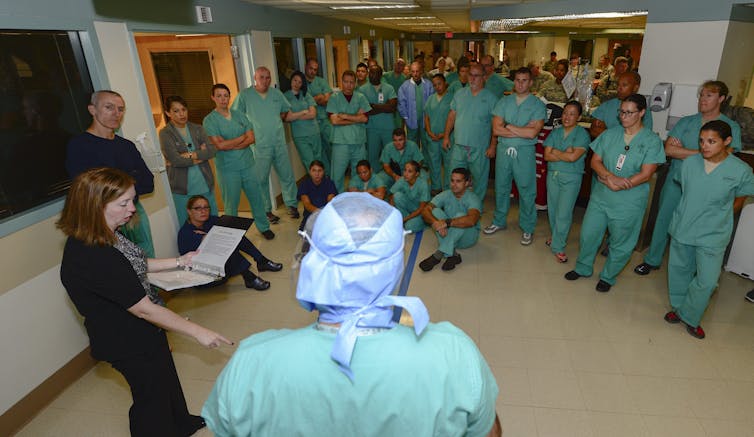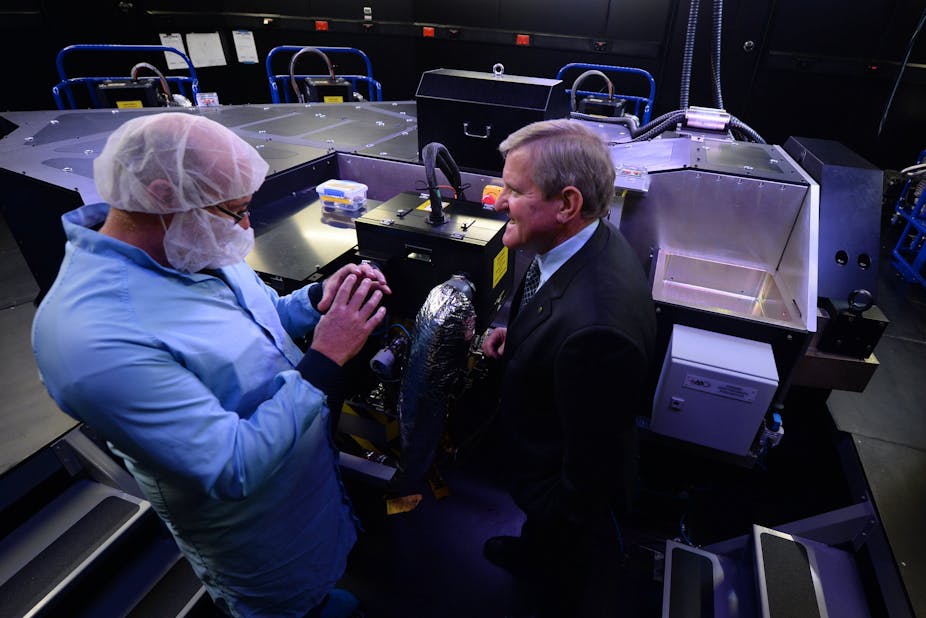The Departments of Education and Industry jointly released a paper, Boosting the Commercial Returns from Research, this morning. While somewhat short on details, the document clarifies that the Commonwealth places industry-university cooperation and engagement at the heart of its research funding agenda.
Today’s announcement brings more clarity to the government’s industry-led research agenda – part of its wider “Competitiveness Agenda”, which also seeks to address skills, the business climate and industry policy. Across all of these domains, public funding is in retreat - requiring more to be done with fewer resources.
There are “carrots” and “sticks” in the document. Generally, these take the form of incentives for industry to become more involved with universities and plenty of sticks for research agencies and universities that don’t get on board the government’s agenda.
The tone of the document clearly differs from Industry Minister Ian Macfarlane’s comments in August when he seemed to dismiss the commonly accepted measures of research quality in favour of patents. His comments were, at the time, roundly criticised within the research community. Today’s document seems at pains to point out that there is no dichotomy between research quality and research relevance.
The paper cites OECD data that shows poor collaboration between Australian universities and industry – although it does point to the CSIRO as an exemplar of industry cooperation. This is somewhat ironic given the recent budget cuts for the unfortunate scientists at our premier research organisation.
The “do more with less” mantra should also be contextualised within other OECD statistics – unsurprisingly not cited by the paper - that show government expenditures on research and development in Australia are among the lowest of OECD member states.
Indeed, to get Australia’s governmental expenditure on research and development (reported by the OECD at 0.529% of GDP) to the recent OECD average of 0.843% of GDP would require an approximate additional A$4.7 billion a year spent by government on research and development. Now that would buy some collaboration with industry!
Otherwise, the proposals are in line with prior announcements.

It seems likely that the Australian Research Council and, to a lesser degree, the National Health and Medical Research Council will incorporate other criteria – prior industry experience and engagement - into their grant decision making. At the margins, the effect of such changes will be some grants getting funded that would otherwise not. Changing the funding criteria does not, of course, overcome the problem of budget cuts across the board for research and rising research costs.
The paper seems to suggest constraints will be placed on how universities expend their Research Block Grants. The costs of research that these block grants support already significantly exceed the value of the grants. Any constraints will driver either creative accounting at universities, or further cuts to internal research funding, or most likely both.
The paper mentions leveraging public funding and additional tax incentives for industry. These arrangements will create further benefits for researchers who can garner industry financial support, at the expense of those who cannot.
In a fundamental sense, the increased direct and indirect influence of industry on funding outcomes will create major changes in outcomes – which the government clearly desires. In essence, research will have to be both profitable and scientifically meritorious. Little thought seems to be given to the notion that such skewing is not without costs.
There are numerous examples of how the profit motive leaves much important research “on the shelf”. For example, Ebola first appeared in the mid-1970s, but little research has been undertaken into its treatment as its casualties were poor Africans.
Other research that may be of great social benefit - in primary school education, for example, or in the development of better understanding of Autism Spectrum Disorders - but which would not drive commercial profit, seems doomed to marginalisation.
Other examples that don’t fit the narrow sectoral boundaries flagged, and the profit constraint, potentially include astronomy, mathematics, pure physics and (of course) the entirety of the Humanities. It is a pity that the government has not considered this is a problem or, if it has, fails to see it as important enough to mention in its report.

